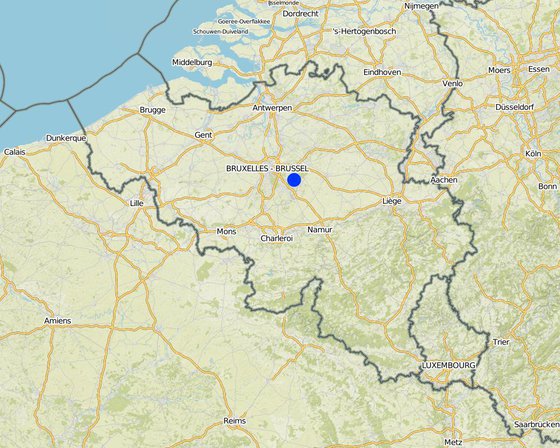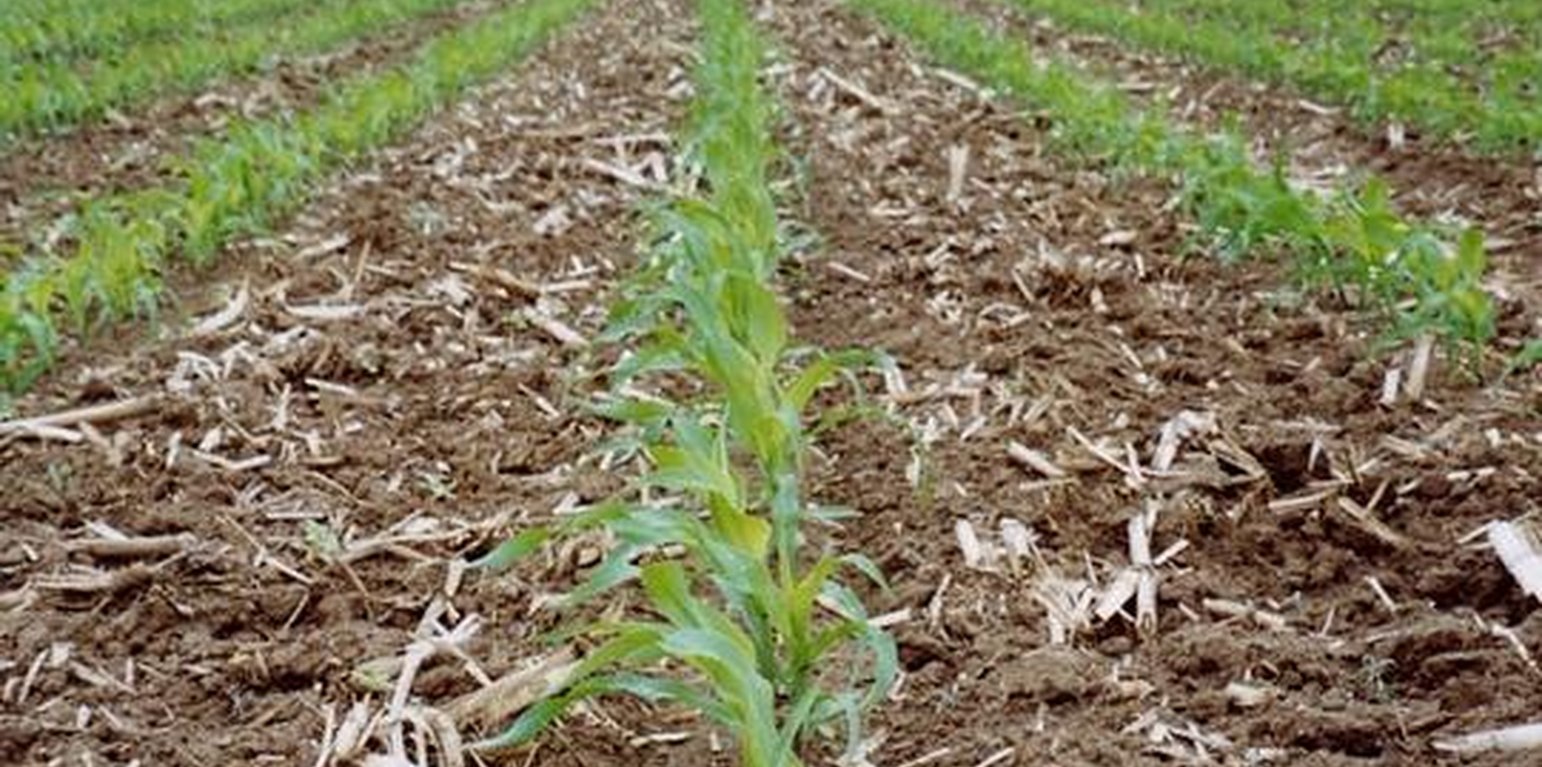Non-inversion shallow cultivation
(Belgium)
Oppervlakkige niet-kerende bodembewerking
Description
The technology consists of the use of cover crops and of a non-inversion seedbed preparation
The technology consists of agronomic measures. The most important thing is that the farmers are not allowed to invert the soil by ploughing. Farmers may only cultivate their fields as minimum and as shallow as possible. Farmers also have to use a cover crop, if possible. In this way the soil is always covered with residues of a previous crop or with residues of the cover crop. The improvement of the ground cover protects the soil against different kinds of water erosion. In the long term period, the soil structure will improve (more organic matter in top soil) and more earthworm activity will be determined. The infiltration of water will increase.
Purpose of the Technology: Protecting the soil against erosion and increasing infiltration.
Establishment / maintenance activities and inputs: The farmer may never plough.
Natural / human environment: The technology is applied on cropland with annual crops.
Location

Location: Vlaams-Brabant, Flanders, Belgium
No. of Technology sites analysed:
Geo-reference of selected sites
Spread of the Technology: evenly spread over an area (0.0046 km²)
In a permanently protected area?:
Date of implementation: less than 10 years ago (recently)
Type of introduction
-
through land users' innovation
-
as part of a traditional system (> 50 years)
-
during experiments/ research
-
through projects/ external interventions

Direct drilling machine
Classification of the Technology
Main purpose
-
improve production
-
reduce, prevent, restore land degradation
-
conserve ecosystem
-
protect a watershed/ downstream areas – in combination with other Technologies
-
preserve/ improve biodiversity
-
reduce risk of disasters
-
adapt to climate change/ extremes and its impacts
-
mitigate climate change and its impacts
-
create beneficial economic impact
-
create beneficial social impact
Land use
-
Cropland
- Annual cropping: cereals - maize, root/tuber crops - potatoes, root/tuber crops - sugar beet, wheat
Number of growing seasons per year: 1
Is crop rotation practiced? Yes
Water supply
-
rainfed
-
mixed rainfed-irrigated
-
full irrigation
Purpose related to land degradation
-
prevent land degradation
-
reduce land degradation
-
restore/ rehabilitate severely degraded land
-
adapt to land degradation
-
not applicable
Degradation addressed
-
soil erosion by water - Wt: loss of topsoil/ surface erosion, Wg: gully erosion/ gullying, Wo: offsite degradation effects
-
physical soil deterioration - Pk: slaking and crusting
SLM group
-
improved ground/ vegetation cover
-
minimal soil disturbance
SLM measures
-
agronomic measures - A2: Organic matter/ soil fertility, A3: Soil surface treatment, A4: Subsurface treatment
Technical drawing
Technical specifications
Establishment and maintenance: activities, inputs and costs
Calculation of inputs and costs
- Costs are calculated:
- Currency used for cost calculation: n.a.
- Exchange rate (to USD): 1 USD = n.a
- Average wage cost of hired labour per day: n.a
Most important factors affecting the costs
n.a.
Establishment activities
n.a.
Maintenance activities
-
sowing maize, inorganic nitrogen (Timing/ frequency: apr 2004 /)
-
sowing winter barley (Timing/ frequency: oct 2003 /)
-
injection of slurry, herbicide paraquat (Timing/ frequency: mar 2004 /)
-
spraying herbicides (Timing/ frequency: may 2004 /)
-
harvesting, sowing winter wheat (Timing/ frequency: nov 2004 /)
Natural environment
Average annual rainfall
-
< 250 mm
-
251-500 mm
-
501-750 mm
-
751-1,000 mm
-
1,001-1,500 mm
-
1,501-2,000 mm
-
2,001-3,000 mm
-
3,001-4,000 mm
-
> 4,000 mm
Agro-climatic zone
-
humid
-
sub-humid
-
semi-arid
-
arid
Specifications on climate
Average annual rainfall in mm: 780.1
Slope
-
flat (0-2%)
-
gentle (3-5%)
-
moderate (6-10%)
-
rolling (11-15%)
-
hilly (16-30%)
-
steep (31-60%)
-
very steep (>60%)
Landforms
-
plateau/plains
-
ridges
-
mountain slopes
-
hill slopes
-
footslopes
-
valley floors
Altitude
-
0-100 m a.s.l.
-
101-500 m a.s.l.
-
501-1,000 m a.s.l.
-
1,001-1,500 m a.s.l.
-
1,501-2,000 m a.s.l.
-
2,001-2,500 m a.s.l.
-
2,501-3,000 m a.s.l.
-
3,001-4,000 m a.s.l.
-
> 4,000 m a.s.l.
Technology is applied in
-
convex situations
-
concave situations
-
not relevant
Soil depth
-
very shallow (0-20 cm)
-
shallow (21-50 cm)
-
moderately deep (51-80 cm)
-
deep (81-120 cm)
-
very deep (> 120 cm)
Soil texture (topsoil)
-
coarse/ light (sandy)
-
medium (loamy, silty)
-
fine/ heavy (clay)
Soil texture (> 20 cm below surface)
-
coarse/ light (sandy)
-
medium (loamy, silty)
-
fine/ heavy (clay)
Topsoil organic matter content
-
high (>3%)
-
medium (1-3%)
-
low (<1%)
Groundwater table
-
on surface
-
< 5 m
-
5-50 m
-
> 50 m
Availability of surface water
-
excess
-
good
-
medium
-
poor/ none
Water quality (untreated)
-
good drinking water
-
poor drinking water (treatment required)
-
for agricultural use only (irrigation)
-
unusable
Is salinity a problem?
Occurrence of flooding
Characteristics of land users applying the Technology
Market orientation
-
subsistence (self-supply)
-
mixed (subsistence/ commercial)
-
commercial/ market
Off-farm income
-
less than 10% of all income
-
10-50% of all income
-
> 50% of all income
Relative level of wealth
-
very poor
-
poor
-
average
-
rich
-
very rich
Level of mechanization
-
manual work
-
animal traction
-
mechanized/ motorized
Sedentary or nomadic
-
Sedentary
-
Semi-nomadic
-
Nomadic
Individuals or groups
-
individual/ household
-
groups/ community
-
cooperative
-
employee (company, government)
Age
-
children
-
youth
-
middle-aged
-
elderly
Area used per household
-
< 0.5 ha
-
0.5-1 ha
-
1-2 ha
-
2-5 ha
-
5-15 ha
-
15-50 ha
-
50-100 ha
-
100-500 ha
-
500-1,000 ha
-
1,000-10,000 ha
-
> 10,000 ha
Scale
-
small-scale
-
medium-scale
-
large-scale
Land ownership
-
state
-
company
-
communal/ village
-
group
-
individual, not titled
-
individual, titled
Land use rights
-
open access (unorganized)
-
communal (organized)
-
leased
-
individual
Water use rights
-
open access (unorganized)
-
communal (organized)
-
leased
-
individual
Access to services and infrastructure
Impacts
Socio-economic impacts
farm income
Because of reduced working time and lower fuel consumption.
Socio-cultural impacts
farmers opinion of a non-ploughed field
Ecological impacts
surface runoff
Quantity before SLM: 34
Quantity after SLM: 16
Also 21 before and 16 after
soil loss
Quantity before SLM: 4.47
Quantity after SLM: 1
Significant reduction in soil loss
Off-site impacts
downstream flooding (undesired)
groundwater/ river pollution
Cost-benefit analysis
Benefits compared with establishment costs
Short-term returns
very negative
very positive
Long-term returns
very negative
very positive
Benefits compared with maintenance costs
Short-term returns
very negative
very positive
Long-term returns
very negative
very positive
Adoption and adaptation
Percentage of land users in the area who have adopted the Technology
-
single cases/ experimental
-
1-10%
-
11-50%
-
> 50%
Of all those who have adopted the Technology, how many have done so without receiving material incentives?
-
0-10%
-
11-50%
-
51-90%
-
91-100%
Has the Technology been modified recently to adapt to changing conditions?
To which changing conditions?
-
climatic change/ extremes
-
changing markets
-
labour availability (e.g. due to migration)
Conclusions and lessons learnt
Strengths: land user's view
Strengths: compiler’s or other key resource person’s view
-
The technology clearly reduces the erosion risk while maintaining profitability.
-
The new technology also has other benefits on soil structure and biodiversity.
Weaknesses/ disadvantages/ risks: land user's viewhow to overcome
-
high investment costs for buying new agricultural machinery
-
more attention to crop damages caused by slugs and mice should be given
-
Practicing the new technology requires a relative dry soil
Weaknesses/ disadvantages/ risks: compiler’s or other key resource person’s viewhow to overcome
-
Practicing the new technology requires a greater skill of the farmers.
education, training
References
Reviewer
-
David Streiff
-
Alexandra Gavilano
Date of documentation: Nov. 8, 2010
Last update: March 7, 2019
Resource persons
-
Katleen Gillijns - SLM specialist
-
Gerard Govers - SLM specialist
Full description in the WOCAT database
Documentation was faciliated by
Institution
- Catholic University of Leuven (KU Leuven) - Belgium
Project
- Soil and water protection (EU-SOWAP)
Key references
-
SOWAP - Project. 2003-2006.: www. Sowap.org









